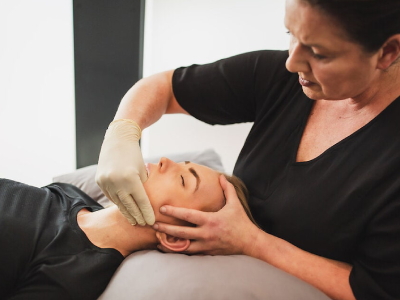TMJ dysfunction, or temporomandibular joint disorder, is a condition affecting many individuals, yet it often goes undiagnosed or misunderstood. The temporomandibular joint connects your jaw to your skull, allowing for movement essential for speaking, eating, and facial expressions. When this joint becomes dysfunctional, it can lead to significant discomfort and impact your quality of life. Seeking effective treatment is crucial for those suffering from TMJ dysfunction to alleviate pain and restore normal function.
What is TMJ Dysfunction?
TMJ dysfunction refers to a group of conditions affecting the jaw joint and surrounding muscles. This disorder can arise from various factors, including jaw injury, arthritis, genetic predisposition, or even stress-related jaw clenching. When the TMJ is not functioning properly, it can lead to pain, discomfort, and limitations in jaw movement, making it vital to understand its underlying causes.
Symptoms of TMJ Dysfunction
Recognizing the symptoms of TMJ dysfunction is essential for timely intervention. Common symptoms include:
- Jaw Pain or Tenderness: This is often the most noticeable symptom, with pain that may radiate to the face, neck, or shoulders.
- Difficulty Chewing: Discomfort while chewing or a sensation of the jaw locking can significantly hinder daily activities.
- Lockjaw (Muscle Spasms): Muscle spasms around the jaw can reduce the mouth’s ability to open and may be accompanied by sharp pain.
- Ear Pain or Ringing: Many individuals experience ear-related symptoms, such as a ringing sensation or earaches.
- Headaches or Migraines: Frequent headaches, particularly tension headaches, can often be linked to TMJ issues.
Being aware of these symptoms can lead to earlier diagnosis and treatment, helping to mitigate potential long-term effects.
Diagnosing TMJ Dysfunction
Diagnosing TMJ dysfunction typically involves a comprehensive approach. It often begins with a visit to your primary care physician, who may refer you to a specialist, such as an otolaryngologist or a dentist specializing in jaw disorders. The diagnostic process may include:
- Medical History Review: Your healthcare provider will assess your medical history and symptoms.
- Physical Examination: This may involve checking for tenderness in the jaw and any clicking or popping sounds during jaw movement.
- Diagnostic Tests: X-rays or MRI scans may be ordered to visualize the joint and rule out other conditions.
It’s important to note that TMJ symptoms can overlap with other medical issues, such as Trigeminal Neuralgia, salivary gland diseases, or swollen lymph nodes, making a thorough diagnosis essential.
Lifestyle Changes for TMJ Management
In addition to medical treatments, certain lifestyle changes can help manage TMJ symptoms effectively:
- Posture Improvement: Maintaining proper posture can reduce strain on the jaw.
- Stress Management Techniques: Implementing stress-reducing practices, like deep breathing or relaxation exercises, can help alleviate muscle tension.
- Dietary Adjustments: Avoiding hard foods and excessive jaw movements can help reduce strain on the TMJ.
When to Seek Professional Help
Recognizing when to consult a professional is crucial for effective TMJ management. If you experience persistent or worsening symptoms, or if you find that over-the-counter medications and home remedies do not provide relief, it is essential to see a TMJ specialist. Early intervention can prevent complications and lead to more effective treatment options.
Takeaway
Understanding Tmj Dysfunction Treatment options is vital for those experiencing jaw pain and discomfort. Whether through conservative management, non-surgical treatments, or lifestyle changes, there are effective solutions available to relieve symptoms and restore normal jaw function. If you suspect you may have TMJ dysfunction, don’t hesitate to seek professional help for a tailored treatment plan.











